Dysfunctional family roles, identified by researchers like Virginia Satir, arise in unstable households, shaping behavior and coping mechanisms. These roles, such as the Hero or Scapegoat, help maintain the family system but often lead to emotional distress and unhealthy patterns in adulthood. Understanding these dynamics is crucial for addressing mental health issues and fostering healthier relationships.
Overview of Dysfunctional Family Dynamics
Dysfunctional family dynamics are characterized by persistent conflict, lack of communication, and unhealthy coping mechanisms. These dynamics create a harmful environment where family members adopt specific roles to maintain the system. Roles like the Hero or Scapegoat emerge, shaping behavior and emotional patterns. Such families often struggle with addiction, abuse, or emotional neglect, leading to a cycle of dysfunction. These dynamics hinder personal growth and foster maladaptive behaviors, making it challenging for individuals to develop healthy relationships in adulthood. Understanding these patterns is key to breaking the cycle of dysfunction.
Importance of Understanding Family Roles
Understanding dysfunctional family roles is crucial for breaking harmful patterns and fostering emotional healing. Recognizing these roles helps individuals identify how their upbringing influences their behavior, relationships, and self-perception. By acknowledging the roles they’ve played, people can address unresolved issues and develop healthier coping mechanisms. This awareness also promotes personal growth, enabling individuals to form more balanced and fulfilling connections in adulthood. Ultimately, understanding family roles is the first step toward healing and creating a more positive, functional environment for future generations.
Defining Dysfunctional Family Roles
Dysfunctional family roles are patterns that maintain imbalance, often emerging in families with addiction or abuse. Key roles include the Hero, Scapegoat, Enabler, Mascot, Lost Child, and Addict, creating a toxic environment.
Key Characteristics of Dysfunctional Families
Dysfunctional families often exhibit rigid roles, poor communication, and unhealthy coping mechanisms. They may struggle with conflict, emotional neglect, and enablement of harmful behaviors. These families frequently lack emotional support and may prioritize maintaining a false image over addressing internal issues. Such environments hinder personal growth and can lead to mental health challenges, reinforcing cycles of dysfunction across generations.
The Role of Family Dynamics in Dysfunction
Family dynamics in dysfunctional households often revolve around rigid roles, enabling behaviors, and lack of healthy communication. These dynamics create an environment where conflict and emotional neglect thrive, perpetuating harmful patterns. Family members may adopt roles like the enabler or scapegoat to maintain stability, inadvertently reinforcing dysfunction. Such interconnected behaviors hinder emotional growth and foster an atmosphere of codependency, making it challenging to break free from the toxic cycle. Understanding these dynamics is essential to addressing the root causes of familial dysfunction and its lasting impact on individuals.
Common Dysfunctional Family Roles
In dysfunctional families, specific roles emerge to maintain the status quo. The Hero often achieves perfection to mask family issues, while the Scapegoat is blamed for problems. The Enabler supports harmful behaviors, and the Mascot uses humor to distract from tension. The Lost Child remains passive and unnoticed, avoiding conflict. Additionally, roles like the Addict or Caretaker may develop, reinforcing the cycle of dysfunction. These roles, while adaptive in childhood, often lead to emotional and relational challenges in adulthood, requiring recognition and change for healing to occur.
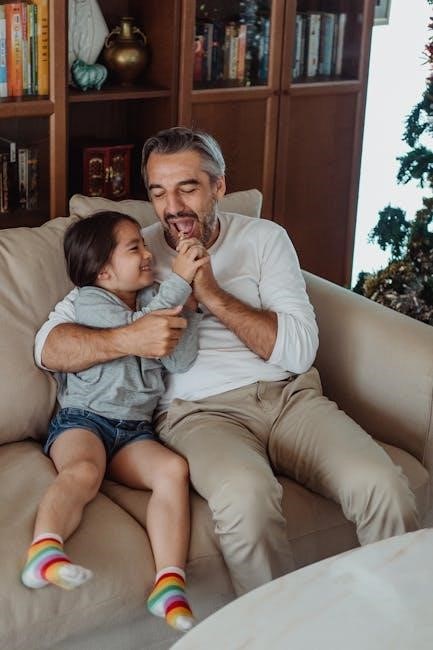
The Main Dysfunctional Family Roles
Dysfunctional family roles include the Hero, Scapegoat, Enabler, Mascot, Lost Child, Addict, and Caretaker. These roles emerge to cope with family dysfunction, often shaping behavior and emotional patterns.
The Hero
The Hero in a dysfunctional family often assumes the role of perfection and over-responsibility. They strive to compensate for the family’s dysfunction by achieving high standards and maintaining a positive image. This role can lead to immense pressure, as the Hero may feel the need to excel academically, socially, or professionally to mask underlying issues. Over time, this can result in emotional suppression, burnout, and difficulty in forming healthy relationships due to an internalized need for control and validation.
The Scapegoat
The Scapegoat is often blamed for the family’s problems, becoming the target of criticism and negativity. This role serves to deflect attention from the family’s deeper issues, such as addiction or abuse. The Scapegoat may act out or rebel, reinforcing their role as the “problem child.” Over time, this can lead to low self-esteem, feelings of guilt, and difficulty trusting others. The Scapegoat’s behavior often reflects suppressed emotions, perpetuating a cycle of dysfunction and affecting their mental health and relationships in adulthood.
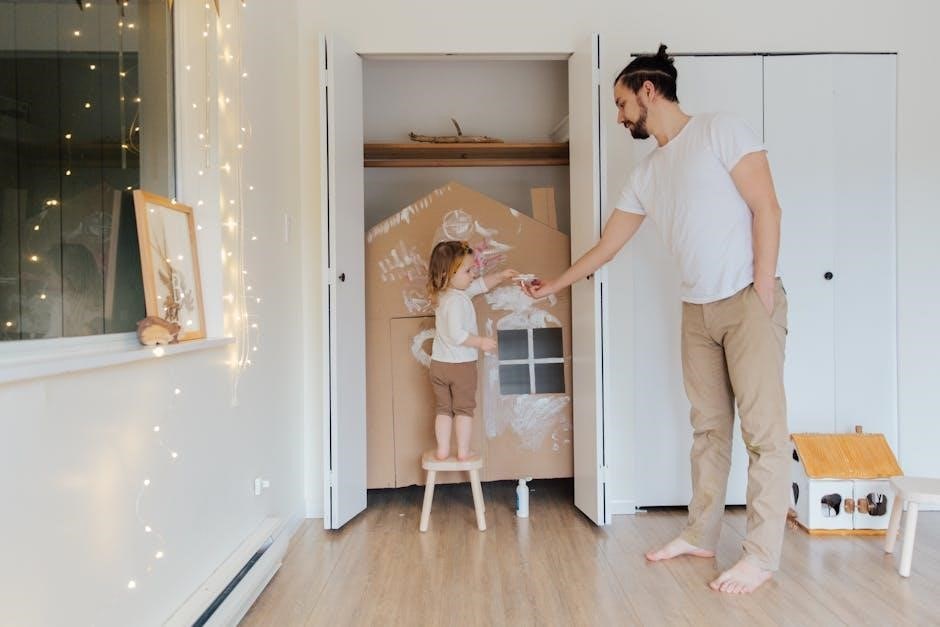
The Enabler
The Enabler, often seen as the caregiver, takes on the responsibility of managing the family’s dysfunction. They may cover up for the addict, mediate conflicts, or sacrifice their own needs to maintain a sense of stability. While their intentions are good, enabling behaviors perpetuate the cycle of dysfunction by protecting others from facing consequences. This role can lead to burnout, resentment, and difficulty in setting healthy boundaries, ultimately hindering personal growth and contributing to the family’s ongoing dysfunction.
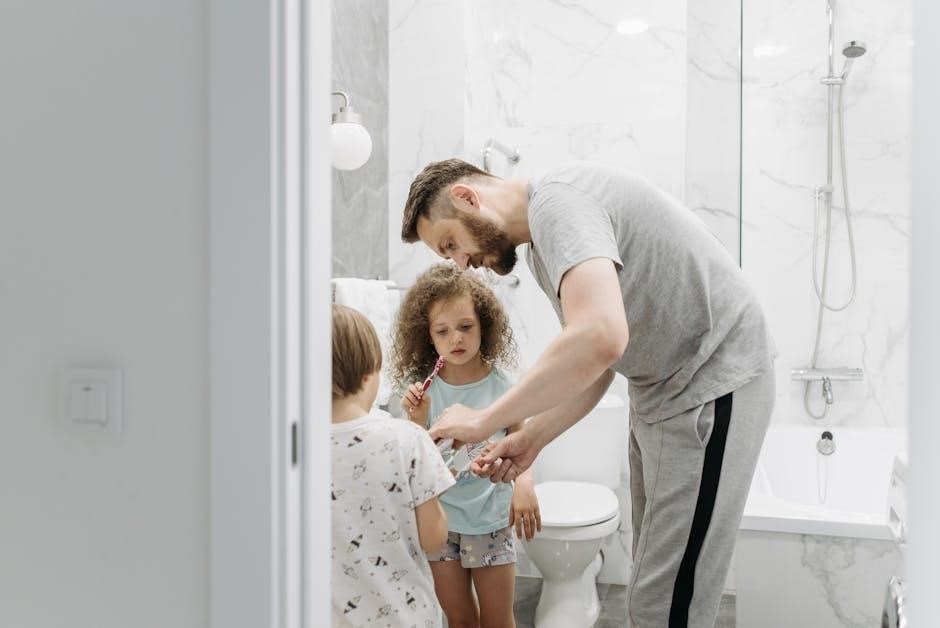
The Mascot
The Mascot assumes the role of the family clown or entertainer, using humor or charm to lighten tense situations. They often distract from underlying issues, preventing the family from addressing real problems. While this role provides temporary relief, it can lead to superficial relationships and inhibit emotional growth. The Mascot may struggle with feelings of inadequacy and difficulty in expressing genuine emotions, as their focus remains on maintaining a facade of normalcy within the dysfunctional environment.
The Lost Child
The Lost Child often feels invisible within the family, adapting by becoming withdrawn and emotionally detached. They may avoid conflict or attention, seeking solace in solitude or fantasy. This role helps them cope with neglect or chaos but can lead to struggles with self-esteem and forming intimate relationships in adulthood. The Lost Child frequently feels disconnected from others, as their need for validation and support goes unmet in the dysfunctional family environment.
The Addict
The Addict is often at the center of a dysfunctional family, with their substance abuse or behavior serving as a focal point for the family’s dynamics. This role distracts from other issues and maintains a sense of balance, albeit unhealthy. The Addict may feel a lack of control and relies on their addiction to cope with emotional pain. Their behavior perpetuates the family’s dysfunction, while other members adapt by enabling or denying the problem, further entrenching the cycle of dependency and codependency.
The Caretaker
The Caretaker assumes responsibility for maintaining harmony in the dysfunctional family, often sacrificing their own needs to ensure others’ well-being. This role involves enabling behaviors, such as covering up for the Addict or mediating conflicts, which perpetuates the family’s unhealthy dynamics. The Caretaker may struggle with setting boundaries and asserting their own emotions, leading to burnout and resentment. This role is driven by a deep-seated need for control and approval, yet it often results in emotional suppression and unmet personal needs, hindering the Caretaker’s ability to develop a healthy sense of self.
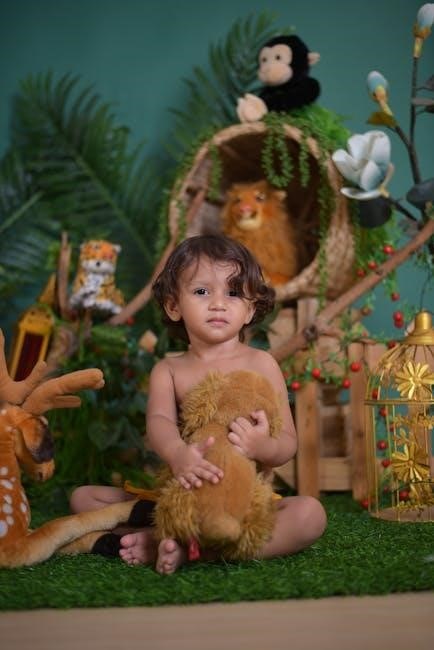
How Dysfunctional Roles Develop
Dysfunctional roles emerge from unstable family environments, shaped by factors like addiction, abuse, and parental influence. These roles stabilize the family system but hinder individual growth.
Family Environment and Role Formation
In dysfunctional families, chaotic dynamics and unstable relationships create an environment where specific roles emerge. Children adapt to these conditions by taking on roles like the Hero or Scapegoat to cope with stress. The family environment, often marked by conflict, addiction, or neglect, forces individuals to adopt roles that maintain the family system. These roles provide a sense of stability but often suppress emotional expression and healthy development. Over time, these patterns become ingrained, influencing behavior and relationships well into adulthood.
Impact of Addiction and Abuse
Addiction and abuse within a family significantly shape dysfunctional roles, creating an unstable environment where members adapt to survive. These issues often lead to the emergence of roles like the Enabler or Scapegoat, as individuals attempt to cope with or escape the chaos. The presence of addiction or abuse distorts family dynamics, fostering codependency and emotional suppression. This toxic atmosphere reinforces harmful patterns, causing long-term emotional and psychological damage to all members involved, particularly children, who may carry these roles into adulthood.
Role of Parental Influence
Parental influence plays a pivotal role in shaping dysfunctional family roles, as parents often set the tone for family dynamics. Their behavior, whether through addiction, emotional distance, or controlling tendencies, significantly impacts how children adapt and assume roles. Parents may unconsciously model harmful patterns, reinforce rigid expectations, or use manipulation to maintain power. This can lead to children adopting roles like the Hero or Scapegoat to cope with the emotional instability. The lack of healthy parental guidance exacerbates dysfunction, forcing children to prioritize family needs over their own development.
The Impact of Dysfunctional Roles
Dysfunctional family roles deeply affect mental health, relationships, and self-perception, often leading to long-term emotional struggles and unhealthy patterns in adulthood.
Effects on Mental Health
Dysfunctional family roles often lead to long-term mental health challenges, including anxiety, depression, and low self-esteem. These roles create emotional distress, fostering feelings of inadequacy and guilt. Children in such environments may struggle with trust issues, fear of abandonment, and self-sabotaging behaviors. The pressure to conform to assigned roles can suppress authentic emotions, leading to internalized shame and identity confusion. Without intervention, these patterns can persist into adulthood, complicating mental health and hindering personal growth.
Influence on Adult Relationships
Dysfunctional family roles deeply shape adult relationships, often leading to patterns of codependency, fear of abandonment, or attraction to similarly harmful dynamics. Individuals may struggle with trust, intimacy, or setting boundaries, replicating the unhealthy interactions learned in childhood. These roles can foster unrealistic expectations or a tendency to seek validation through relationships, perpetuating emotional distress. Recognizing these patterns is key to breaking the cycle and developing healthier, more balanced connections in adulthood, free from the burdens of past family dynamics.
Behavioral Patterns in Adulthood
Adults from dysfunctional families often exhibit behavioral patterns rooted in their childhood roles, such as perfectionism, people-pleasing, or avoidance of intimacy. These patterns may include difficulty trusting others, fear of abandonment, or a tendency to attract unhealthy relationships. Some individuals may struggle with self-worth, manifesting as low self-esteem or an overdependence on others for validation. Recognizing these ingrained behaviors is essential for breaking the cycle and developing healthier coping mechanisms, enabling individuals to move beyond the limitations imposed by their early family experiences.

Self-Esteem and Identity Issues
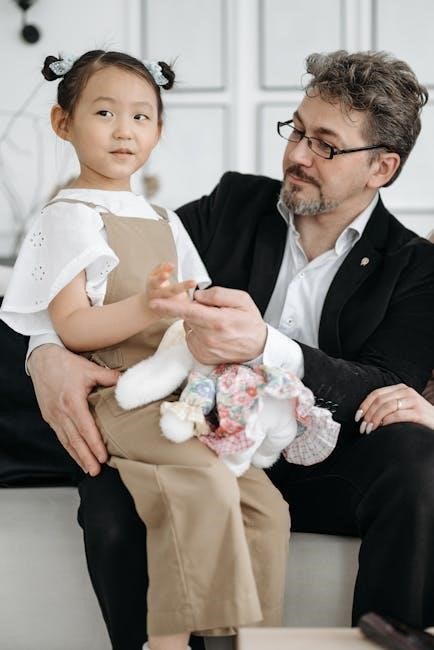
Individuals from dysfunctional families often struggle with self-esteem and identity issues. Roles like the Hero or Scapegoat can lead to perfectionism or internalized guilt, while the Lost Child may experience identity confusion. Difficulty in forming a clear sense of self is common, as these roles often prioritize others’ needs over personal growth. Low self-esteem and self-worth challenges frequently persist into adulthood, hindering personal development and relationships. Recognizing these patterns is crucial for rebuilding a healthy sense of identity and self-confidence.
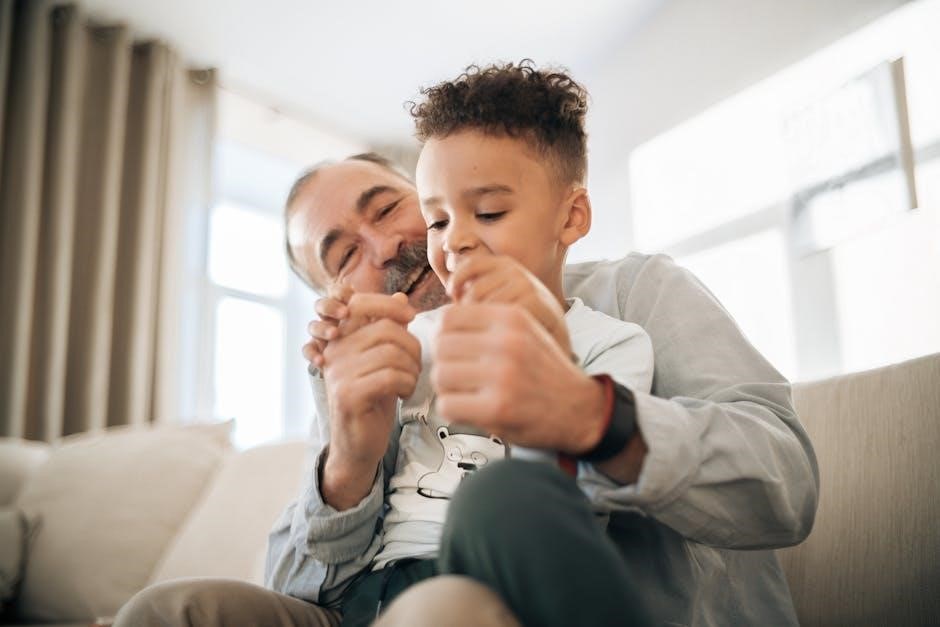
Family Dynamics in Dysfunctional Families
Dysfunctional family dynamics create a chaotic environment where rigid roles maintain imbalance, fostering conflict and emotional distance. These patterns often lead to mental health struggles and strained relationships.
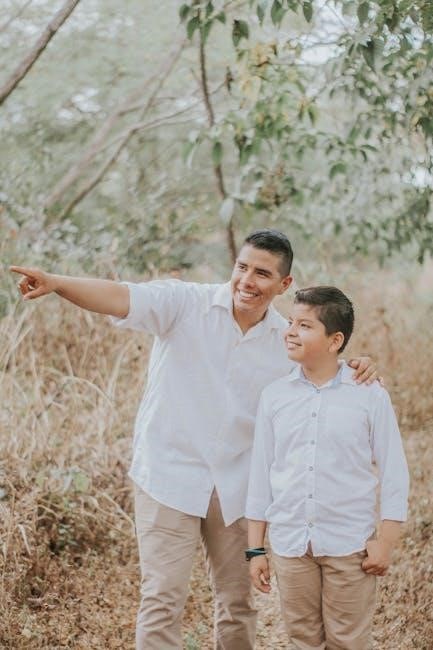
Conflict and Communication Styles
In dysfunctional families, conflict is often frequent and unresolved, with communication styles marked by avoidance, aggression, or passive-aggressive behavior. Healthy expression of emotions is suppressed, leading to misunderstandings and emotional distance. Family members may struggle to articulate their needs, fostering resentment and unresolved issues. These patterns create a toxic environment where conflicts escalate, and relationships become strained. Poor communication further entrenches dysfunctional dynamics, making it difficult for individuals to address problems constructively or feel heard and validated within the family system.
Unhealthy Coping Mechanisms
In dysfunctional families, members often adopt harmful coping strategies to deal with stress and emotional pain. These mechanisms may include substance abuse, denial, or avoidance, which provide temporary relief but exacerbate long-term issues. Family dynamics can encourage these behaviors, creating a cycle of dependency and dysfunction. For instance, the Enabler may cover up an addict’s behavior, while the Addict uses substances to escape emotional turmoil. These unhealthy coping mechanisms perpetuate the family’s dysfunction, hindering individuals from addressing root causes and developing healthier ways to manage stress and emotions.
Power Struggles and Control
In dysfunctional families, power imbalances often lead to persistent control struggles. Family members may use manipulation, guilt, or aggression to exert dominance, creating a toxic environment. Roles like the Mastermind or Hero can reinforce these dynamics, as individuals attempt to gain stability or validation. Such power struggles frequently stem from deeper insecurities or fears, perpetuating cycles of control and resistance. This imbalance hinders healthy communication and fosters resentment, further entrenching the family’s dysfunction and limiting emotional growth for all involved.
Emotional Neglect and Distance
In dysfunctional families, emotional neglect often leads to a profound sense of isolation. Family members may avoid discussing emotions or dismiss feelings, fostering a culture of detachment. This emotional distance prevents individuals from developing healthy ways to express or process their feelings. Over time, it can result in difficulty forming intimate relationships or trusting others. The lack of emotional support and validation leaves many feeling unseen and unimportant, contributing to long-term emotional scars and challenges in maintaining meaningful connections in adulthood;
Healing from Dysfunctional Family Roles
Healing from dysfunctional family roles involves acknowledging the dysfunction, seeking professional help, establishing boundaries, and improving communication to foster emotional growth and healthier relationships.
Acknowledging the Dysfunction
Acknowledging the dysfunction in a family system is the first step toward healing. It involves recognizing patterns of behavior, communication styles, and roles that contribute to unhealthy dynamics. This awareness helps individuals understand how their roles were shaped and how they may perpetuate the cycle. By confronting the reality of their family’s dysfunction, individuals can begin to release the emotional burden and take responsibility for their own growth, fostering a path toward healthier relationships and personal freedom.
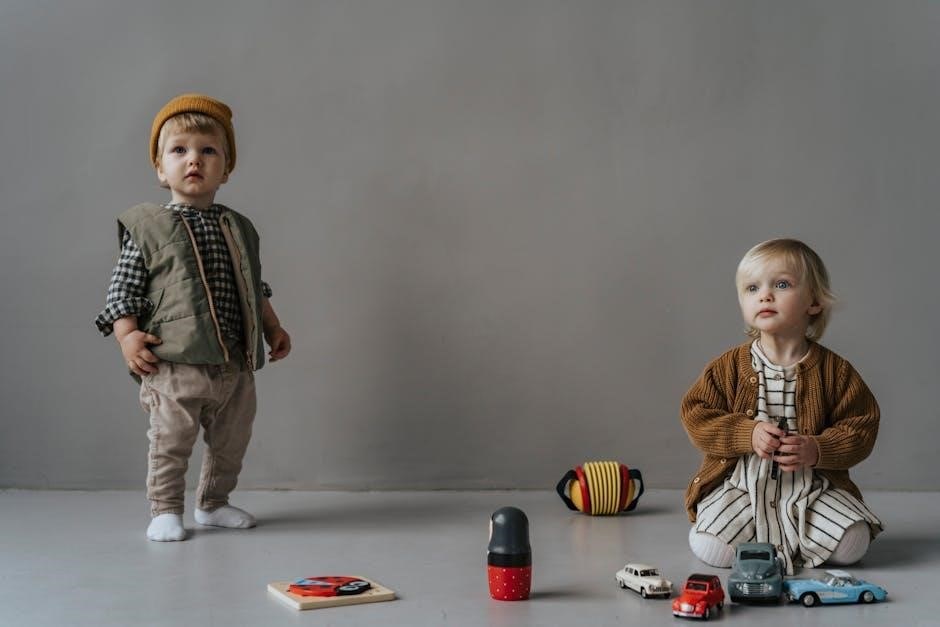
Seeking Professional Help
Seeking professional help is a critical step in addressing dysfunctional family roles. Therapists or counselors can provide guidance, support, and strategies to break free from harmful patterns. They help individuals understand their roles, process emotions, and develop healthier behaviors. Professional help can also offer a safe space to explore past experiences and their impact on current relationships. By working with a therapist, individuals can gain insights and tools to overcome dysfunction, fostering personal growth and healthier family dynamics. This support is essential for long-term healing and emotional well-being.
Setting Healthy Boundaries
Setting healthy boundaries is essential for escaping dysfunctional family roles. Boundaries help protect emotional well-being and prevent enabling harmful behaviors. They allow individuals to distance themselves from toxic dynamics while fostering accountability. By establishing clear limits, family members can reduce emotional overload and promote healthier interactions. This process encourages personal growth and helps break the cycle of dysfunction. Healthy boundaries are vital for creating a balanced and respectful environment, enabling individuals to thrive outside of their assigned roles.
Improving Communication Skills
Improving communication skills is vital for breaking free from dysfunctional family roles. Open and honest dialogue helps reduce misunderstandings and emotional distance. Active listening, expressing feelings calmly, and using “I” statements can foster healthier interactions. Setting clear expectations and being consistent in messaging are key. Practicing empathy and validating others’ emotions also promotes understanding; By enhancing communication, individuals can address unresolved issues and create a more supportive environment, fostering healing and stronger, more respectful relationships.
